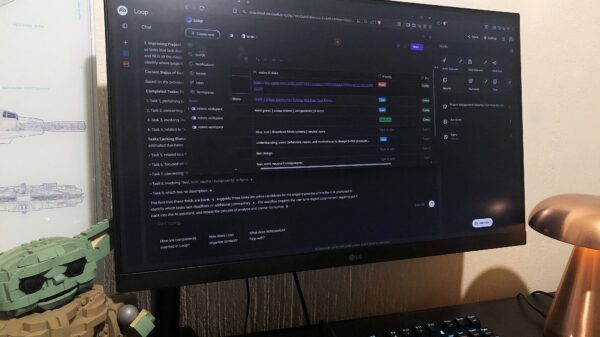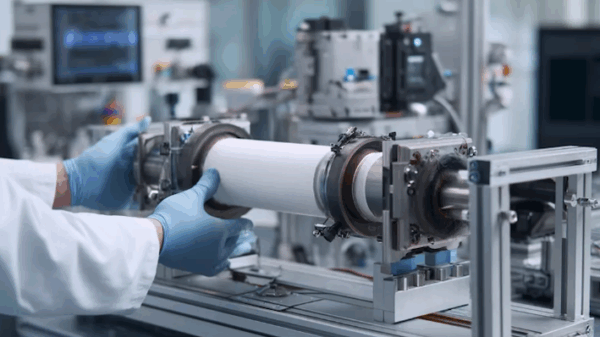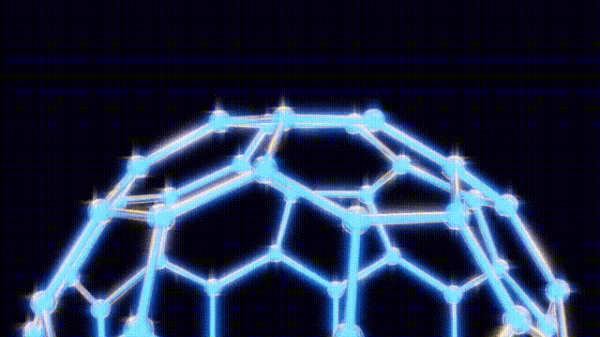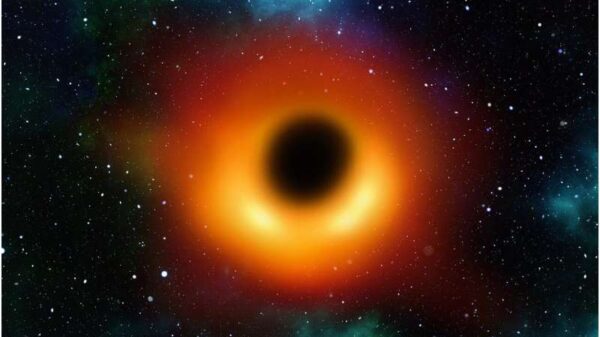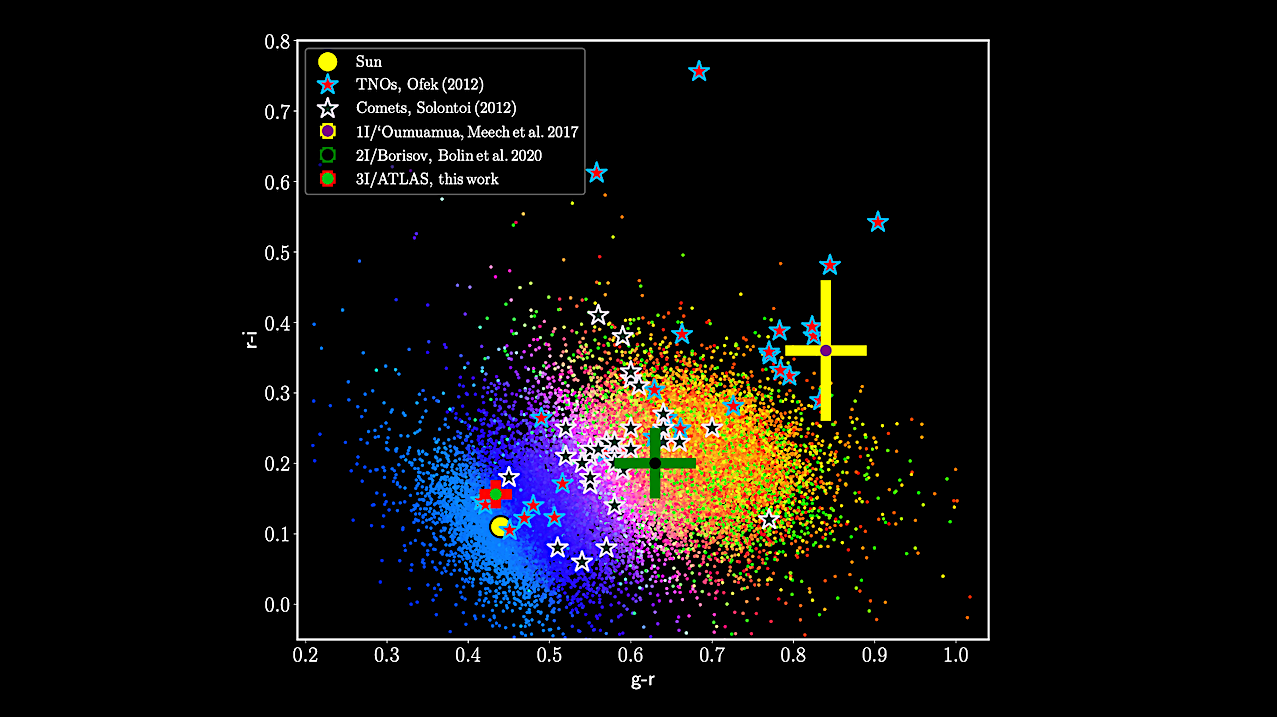The interstellar comet known as 3I/ATLAS was discovered on July 1, 2025, by the Asteroid Terrestrial-impact Last Alert System. Its characteristics suggest a remarkable journey through our solar system, with an eccentricity of approximately 6.08 and a velocity at infinity of about 57 km/s. These metrics confirm the comet’s interstellar origin, offering new insights into the nature of celestial bodies beyond our solar system.
Subsequent observations were conducted using the Palomar 200-inch Telescope on July 3, 2025. Researchers obtained g, r, and i photometry, resulting in significant measurements: the colour indices were recorded as g-r = 0.43±0.02 mag, r-i = 0.16±0.02 mag, and g-i = 0.59±0.03 mag. Additionally, the spectral slope was determined to be 1.3±0.9 %/100 nm, providing crucial data for understanding the comet’s surface composition.
The study also estimated the comet’s dust cross-section to be 230.0±5.2 km within a 10,000 km radius, based on an assumed albedo of 0.10. The full width at half maximum (FWHM) of the comet’s detection was measured at approximately 2.2 arcseconds in the r-band images. These findings indicate significant physical characteristics that help describe 3I/ATLAS.
Another critical aspect of the research involved assessing the comet’s dust ejection speed. By analyzing the sunward extent of the coma, scientists found that particles ranging from micrometers to millimeters have ejection speeds of about 0.01-1 m/s. This suggests a dust mass-loss rate of approximately 0.1 – 1.0 kg/s, indicating active processes at play as the comet travels through space.
The research team, which includes prominent scientists such as Bryce T. Bolin, Matthew Belyakov, and Carey M. Lisse, has documented their findings in an eight-page report, featuring four figures and two tables, submitted to the Monthly Notices of the Royal Astronomical Society (MNRAS). The comprehensive study covers various subjects, including Earth and Planetary Astrophysics, the Astrophysics of Galaxies, and Instrumentation and Methods for Astrophysics.
These findings about 3I/ATLAS not only deepen our understanding of interstellar objects but also contribute to broader discussions regarding the formation and evolution of celestial bodies. As research continues, the scientific community eagerly anticipates more revelations from this interstellar visitor, which represents a unique opportunity to study the composition and behavior of materials from outside our solar system.





